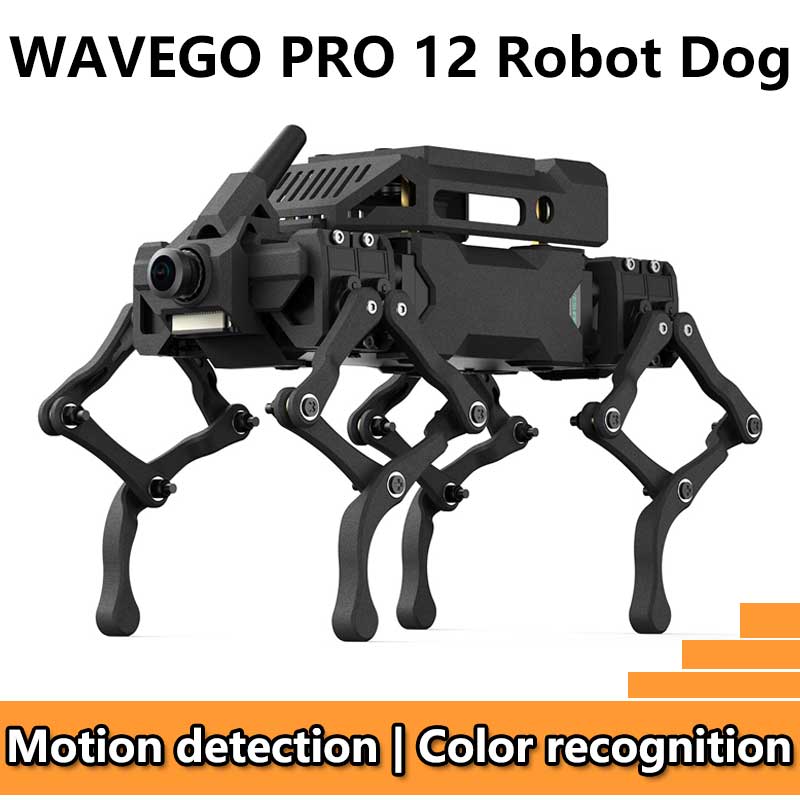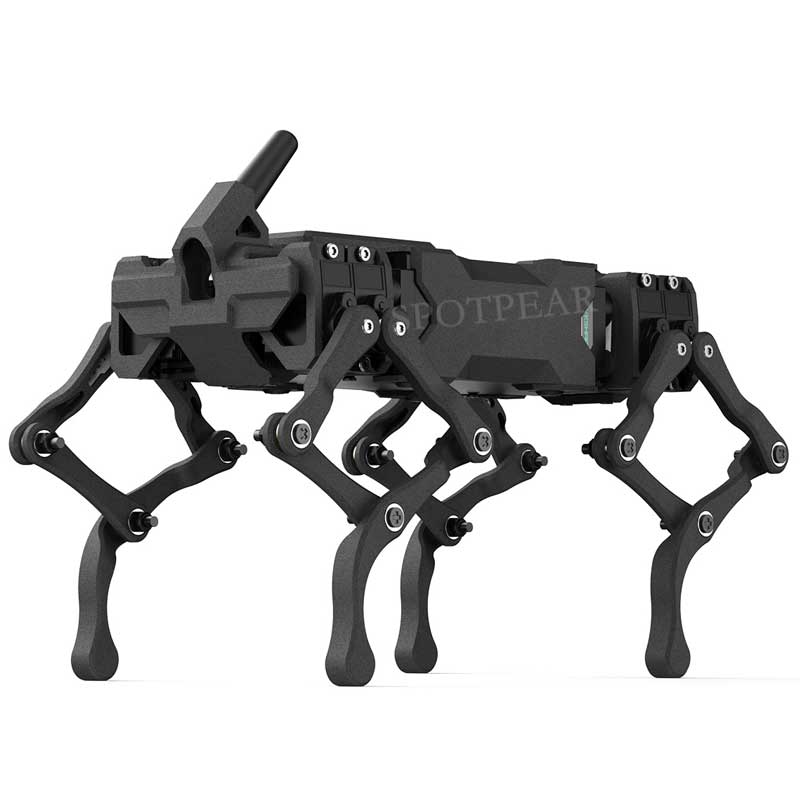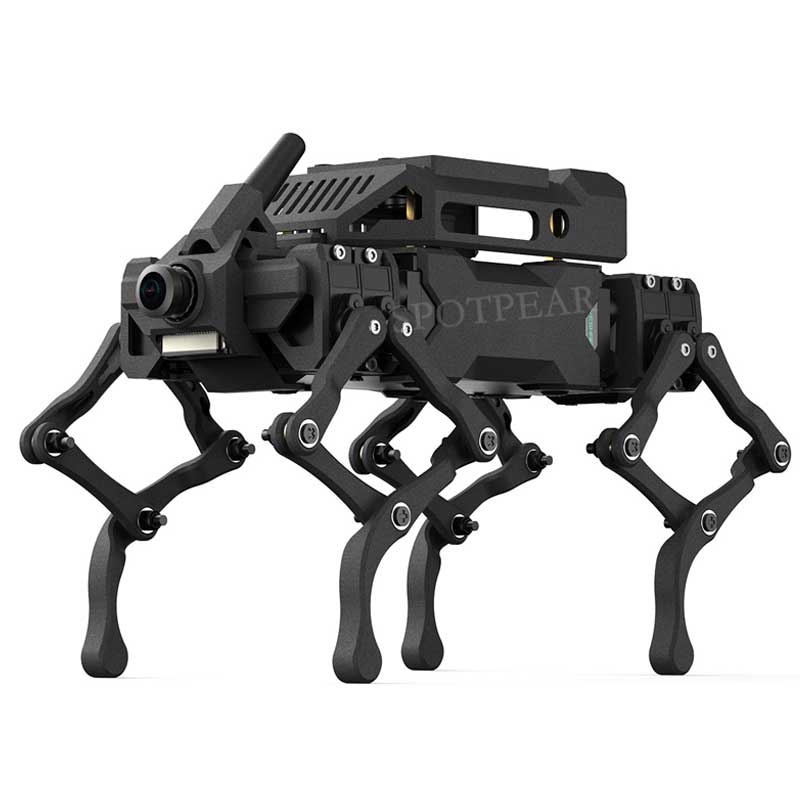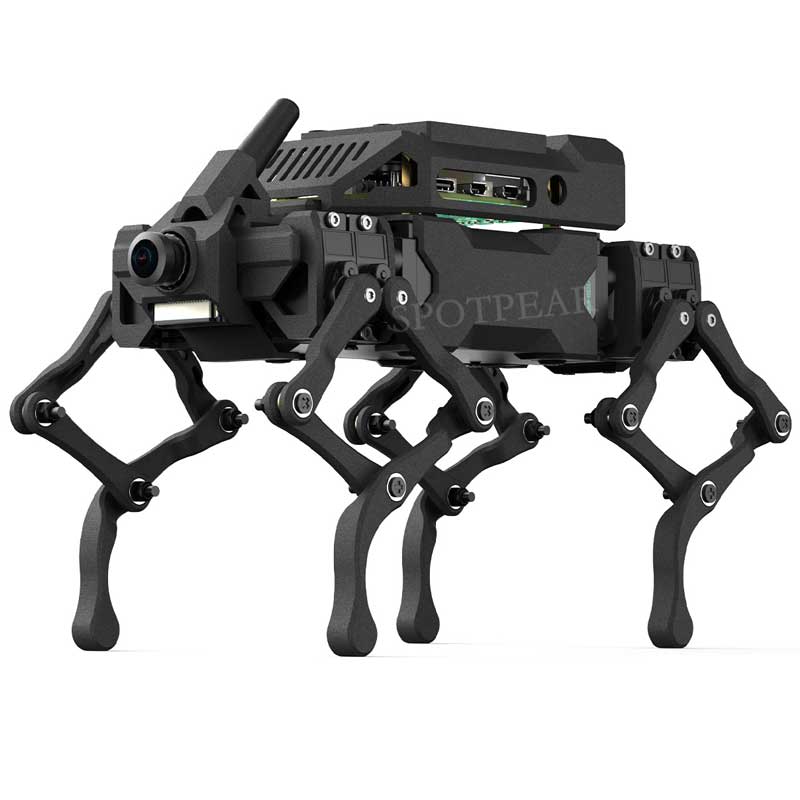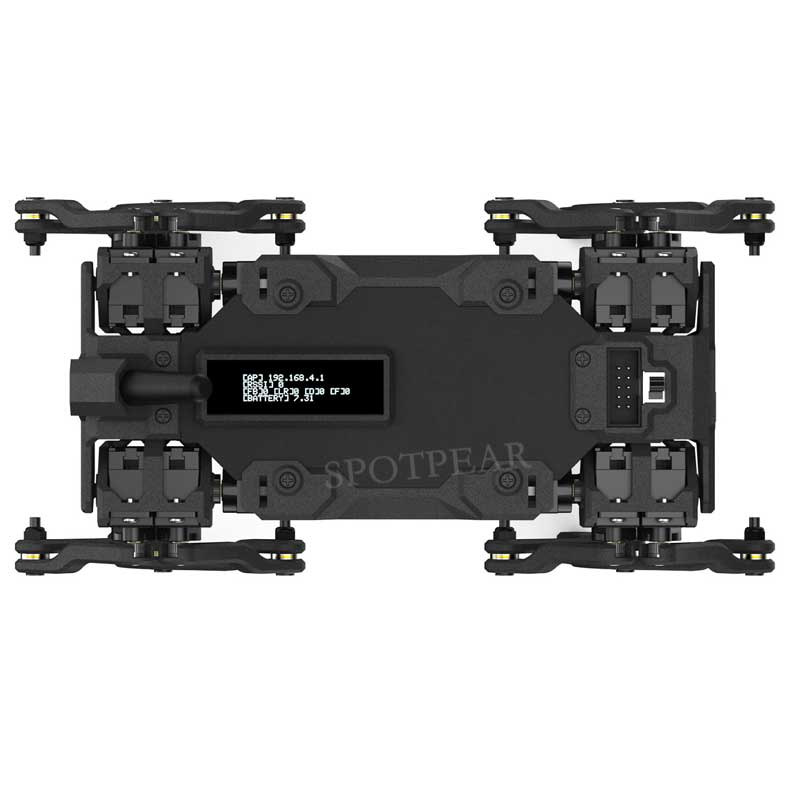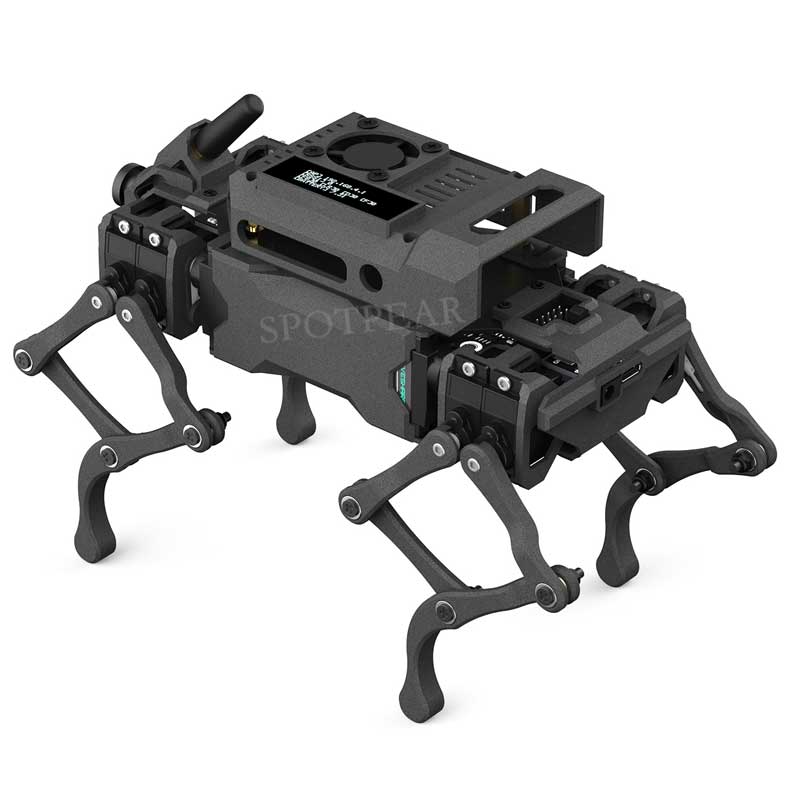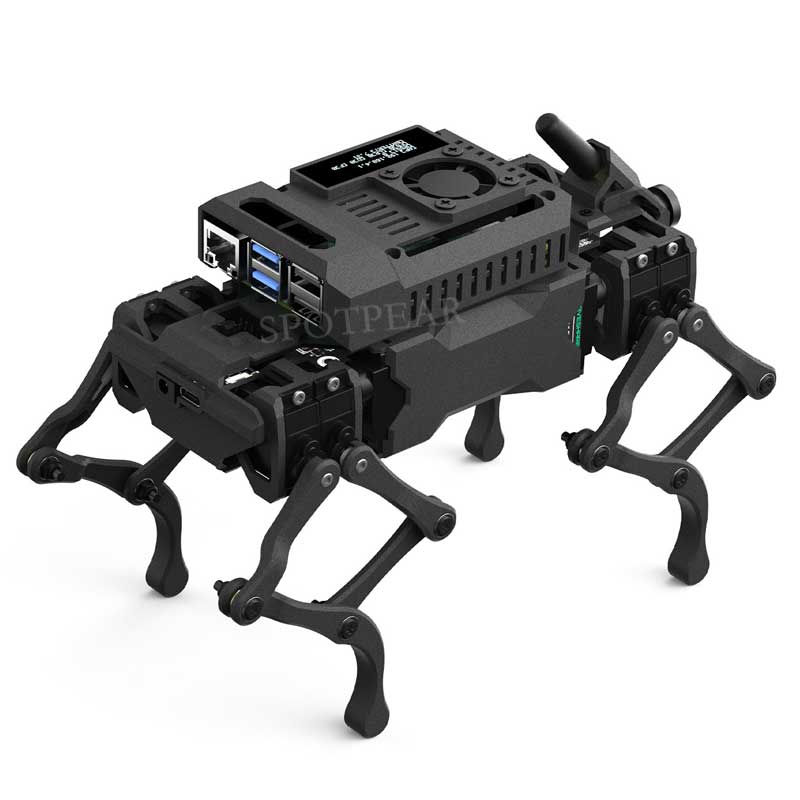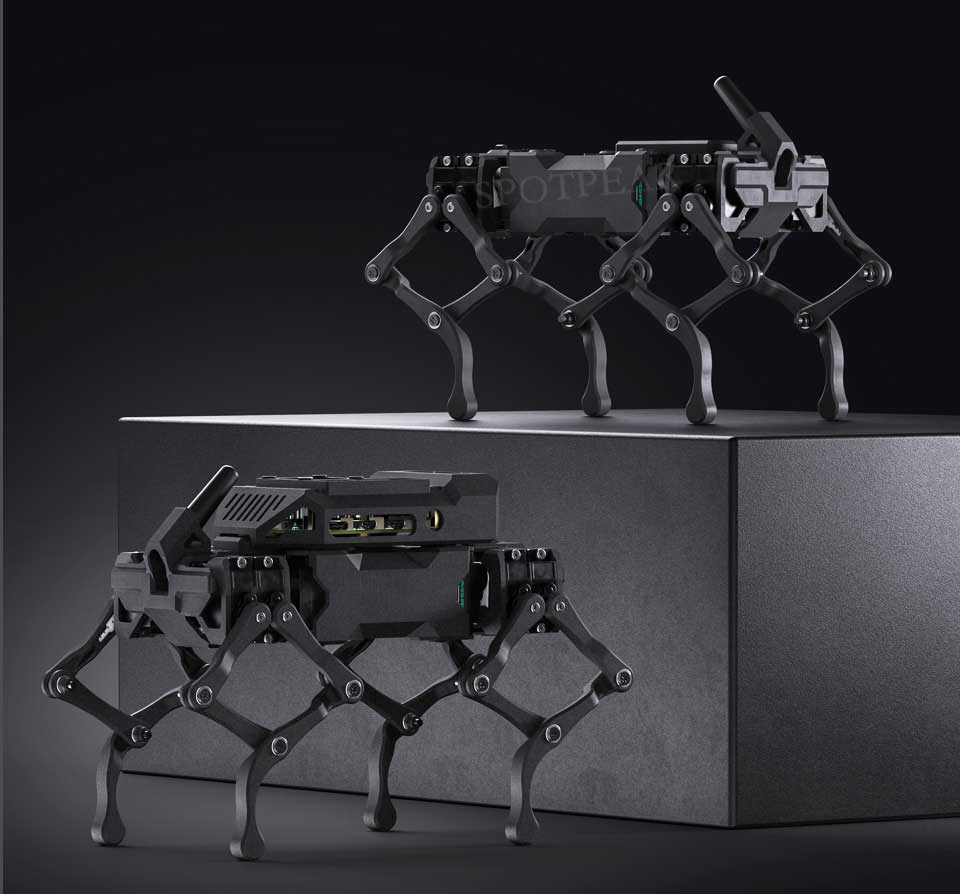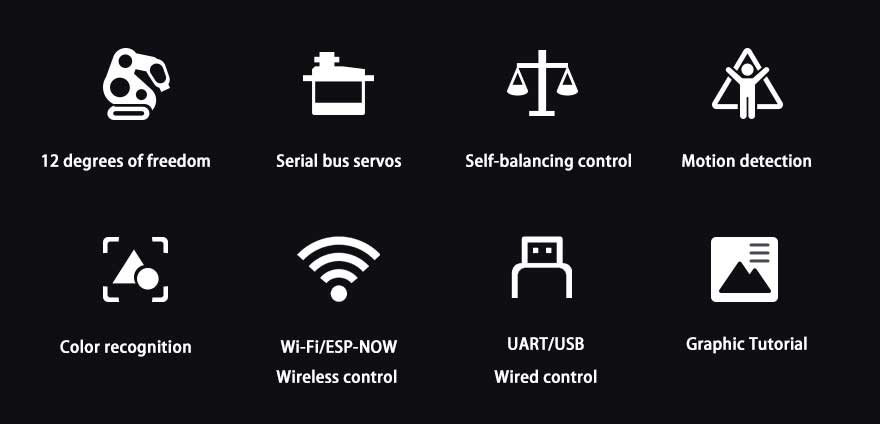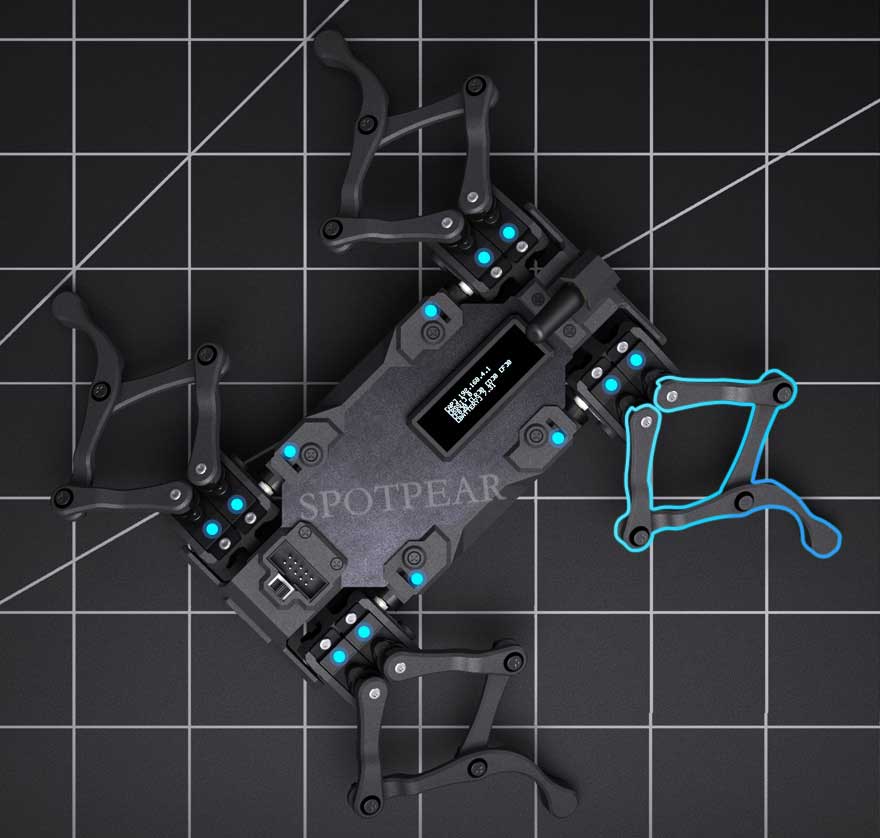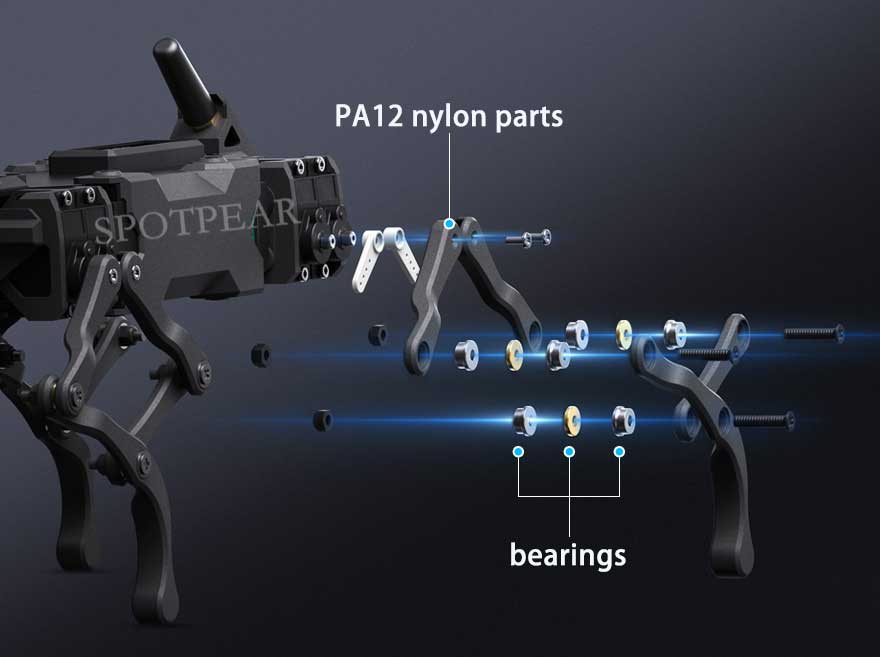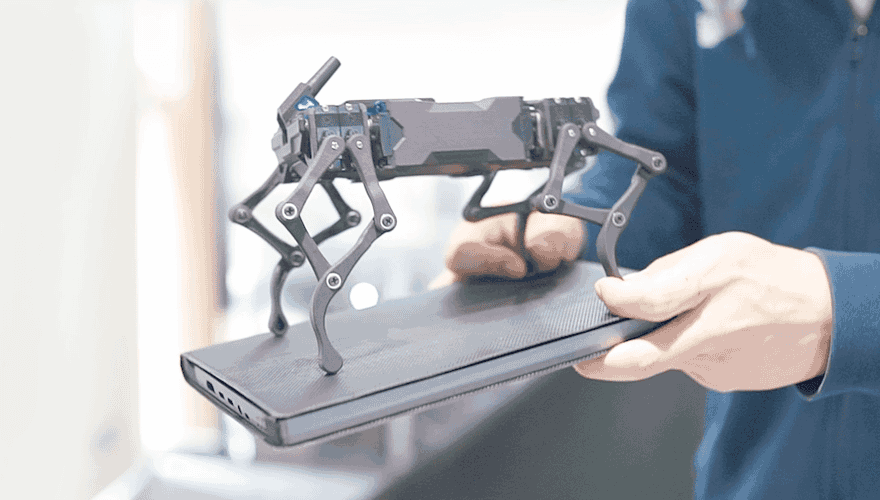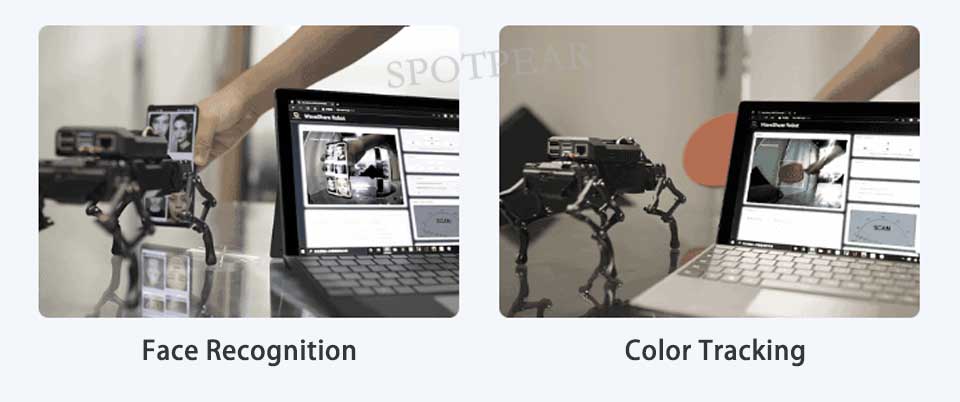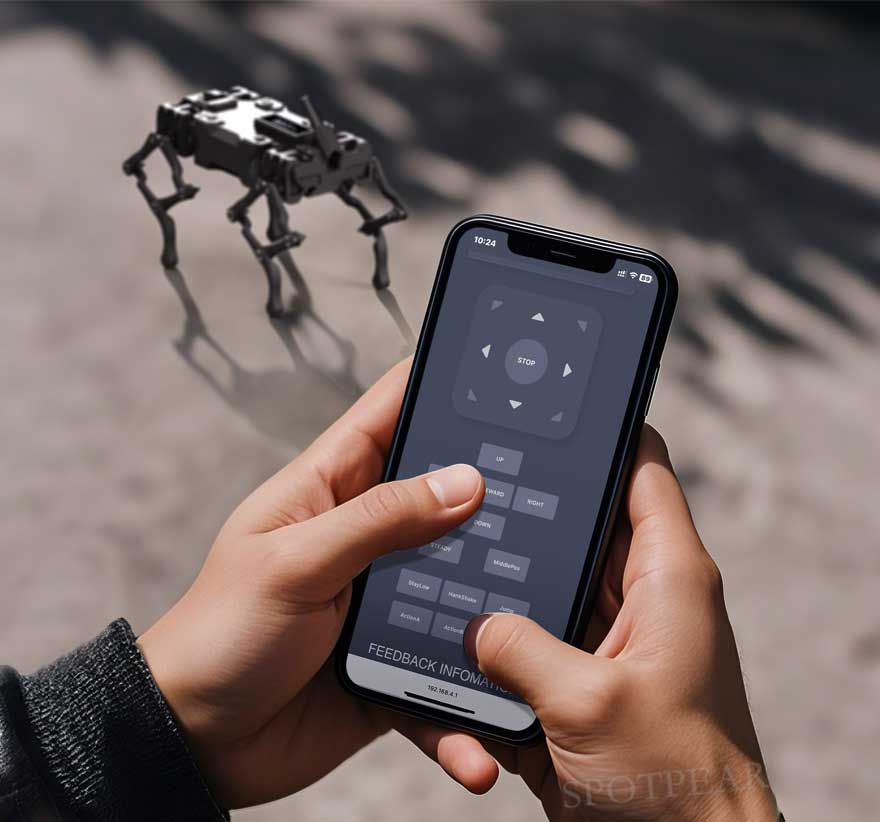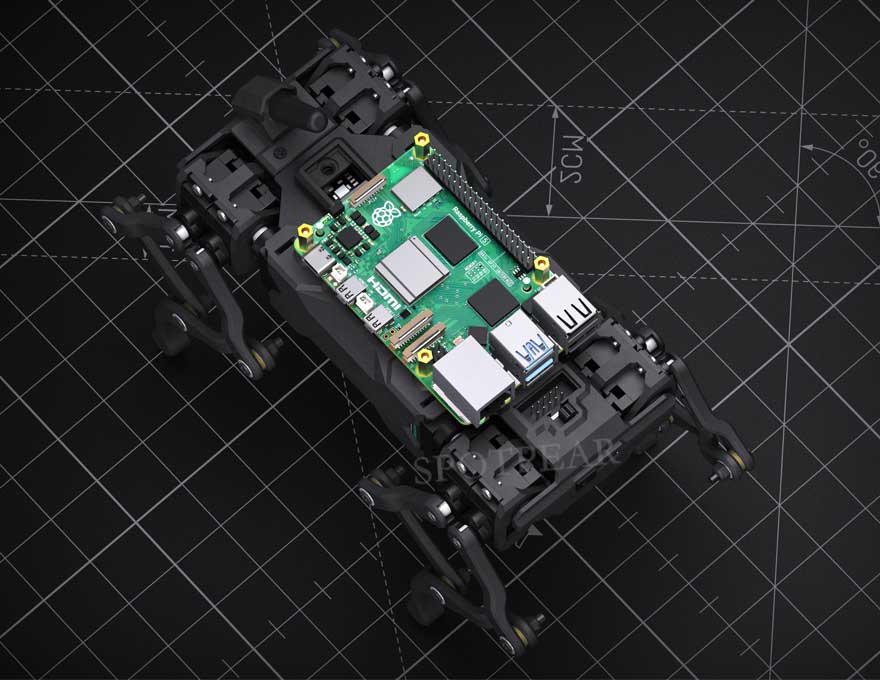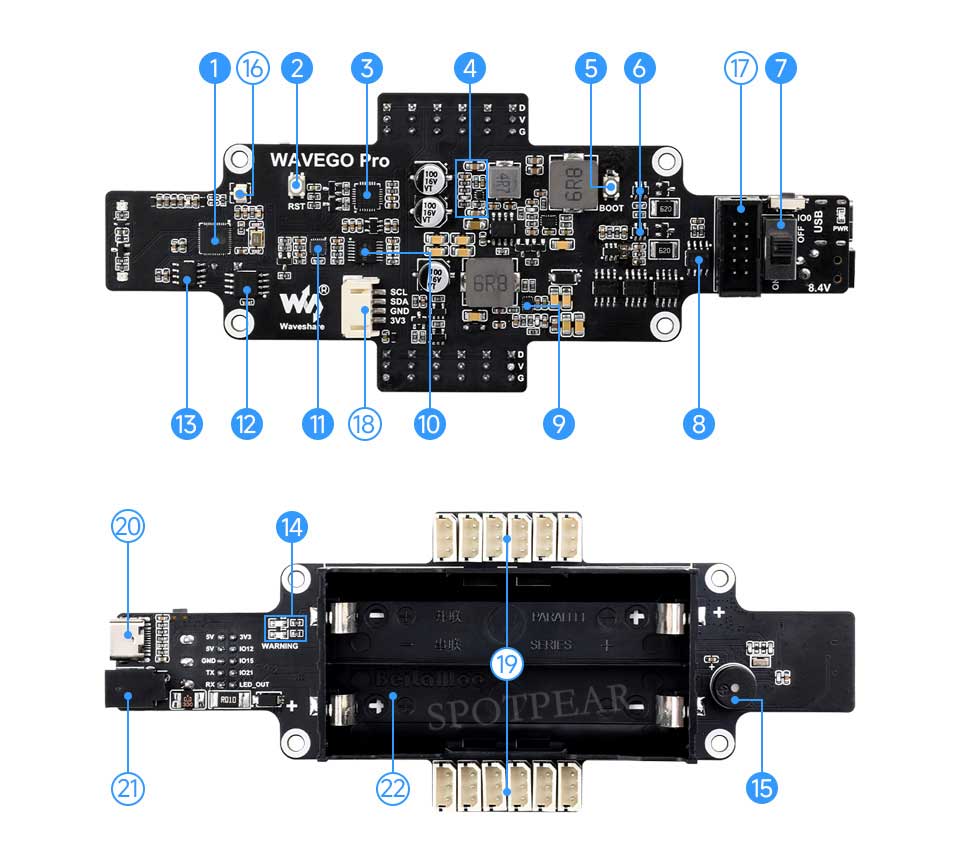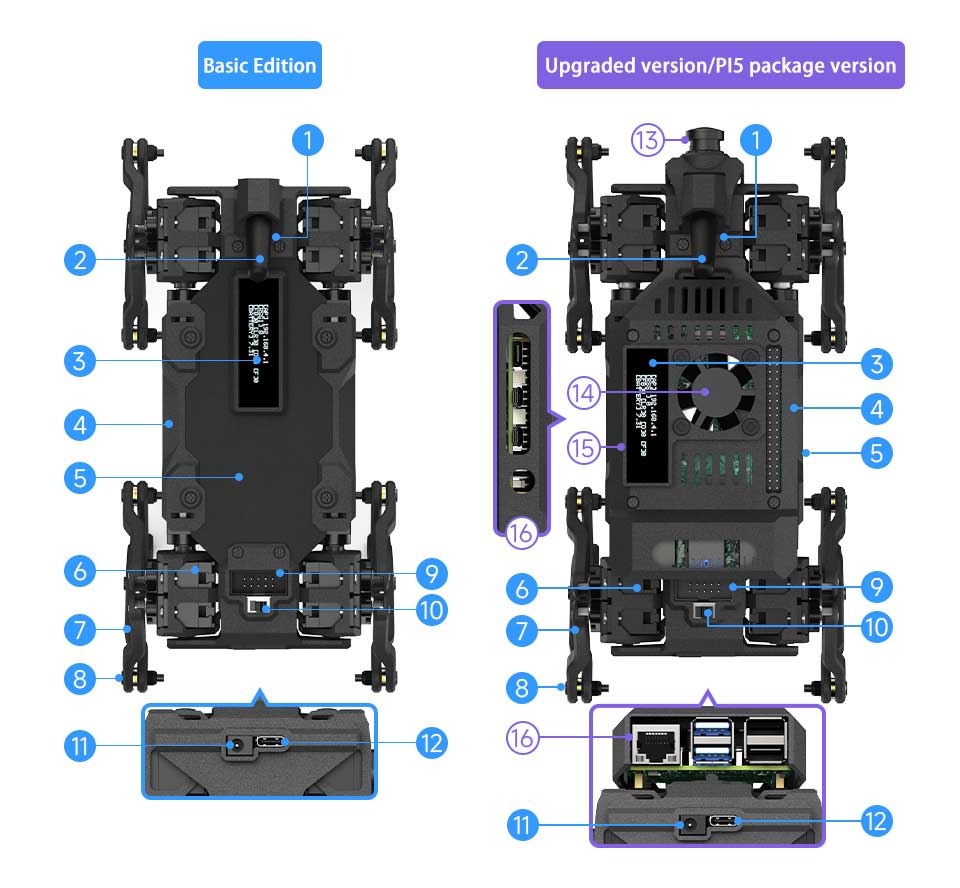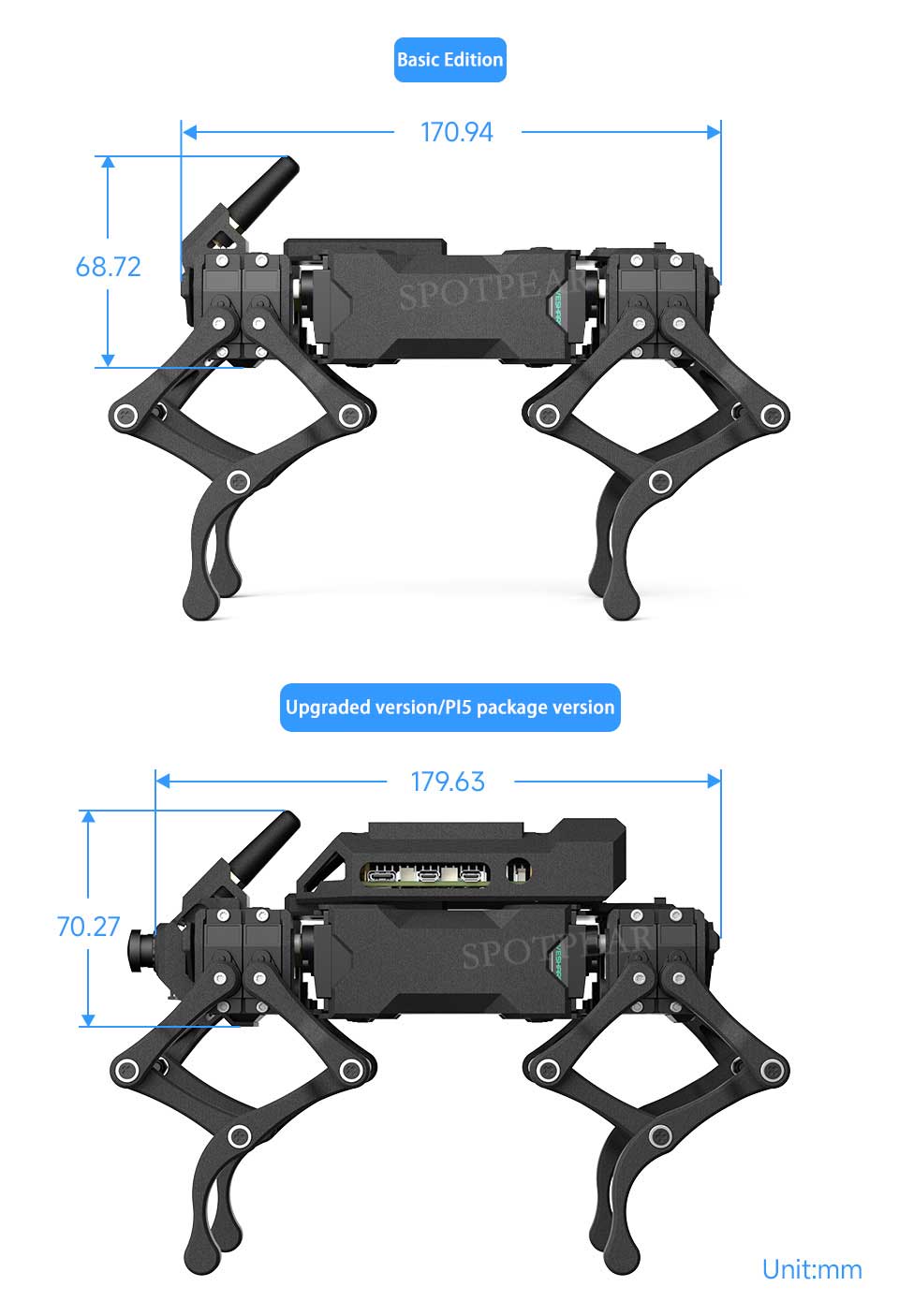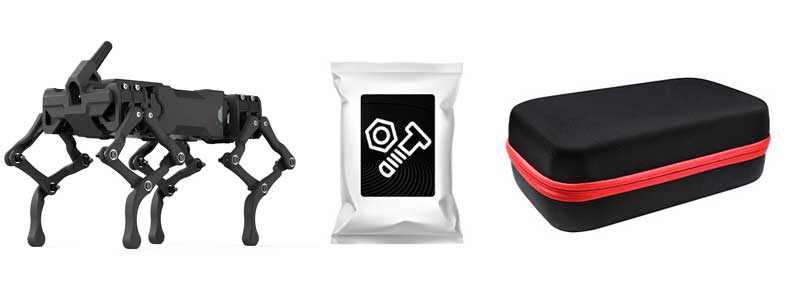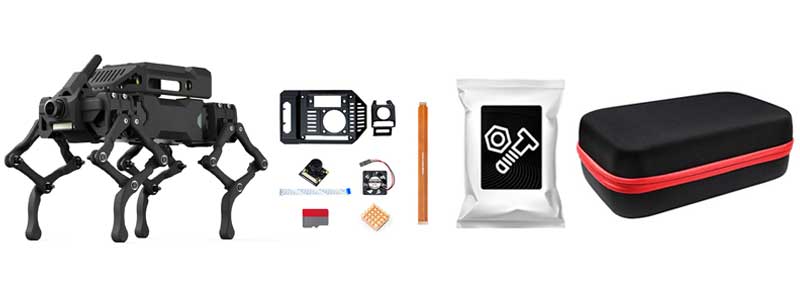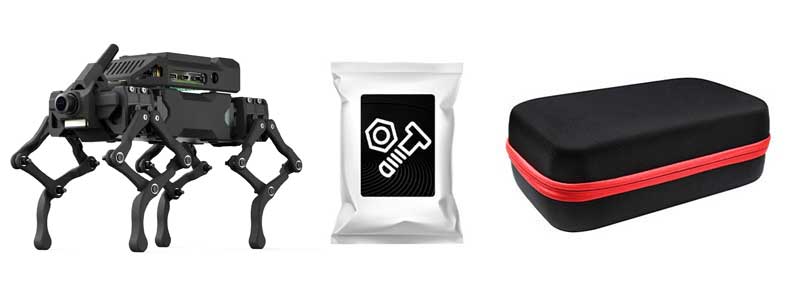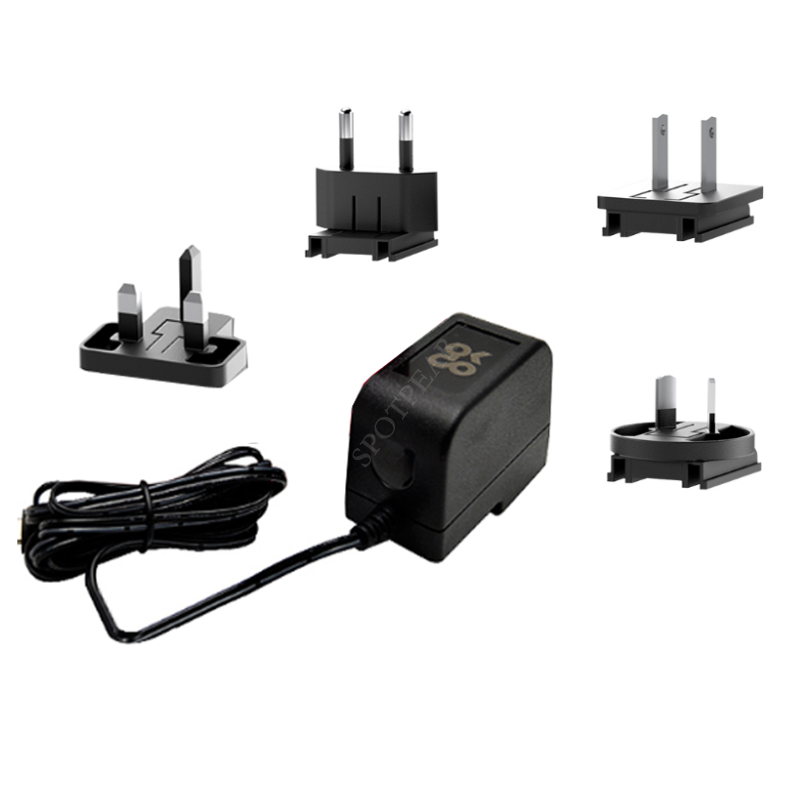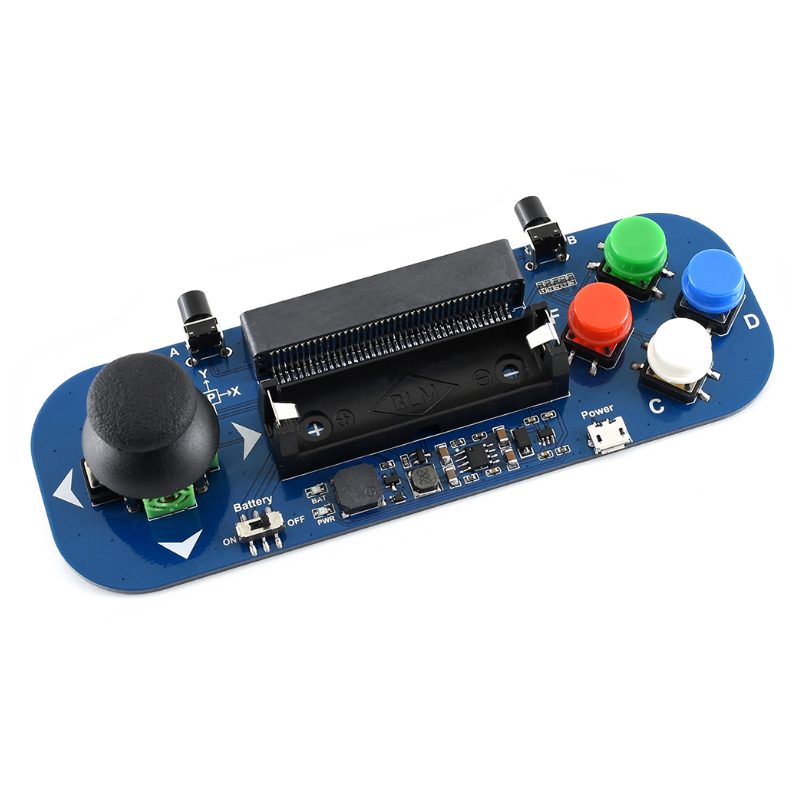- sales/support
Google Chat: zj734465502@gmail.com
- sales
+86-0755-88291180
- sales01
sales@spotpear.com
- sales02
dragon_manager@163.com
- support
tech-support@spotpear.com
- CEO-Complaints
zhoujie@spotpear.com
- sales/support
WhatsApp:13246739196
- HOME
- >
- PRODUCTS
- >
- Robot-Car-Drone
- >
- PI-Robot
Raspberry Pi Robot Dog Wavego Pro 12 quadruped ESP32 ESP-NOW color recognition and self-balancing control
$282.9
WAVEGO PRO is a 12-DOF quadruped robot dog based on ESP32 and Raspberry Pi. It supports ESP-NOW master-slave control mode.
WAVEGO PRO
Upgraded version of high-freedom bionic quadruped robot dog
The lower part is based on ESP32, and the upper part is based on the Raspberry Pi 4B / Raspberry Pi 5 motherboard design
This product is a bionic quadruped robot dog with a high degree of freedom. It features a 2.3kg/cm serial bus servo, a reliable structure, and flexible and rich movements. It integrates a 9-axis motion tracker, RGB, and other devices, and offers an open-source cross-platform web application. It uses an ESP32 as the slave computer for link inverse analysis and gait generation, offloading computing power to the master computer. A Raspberry Pi 4B or Raspberry Pi 5 can be installed as the master computer for high-level decision-making. The upgraded WAVEGO Pro also integrates an ultra-wide-angle lens, enabling visual functions such as color tracking, motion detection, and face detection. Support for JSON protocol communication and ESP-NOW master-slave control mode has been added. JSON commands for robot control can be saved as task files. By calling the task file, the robot dog's motion trajectory can be replayed with one click, facilitating educational displays and quick demonstrations.。
Product Features
- The whole machine has 12 degrees of freedom, and the multi-link structure design of the legs increases the effective torque of the servo.
- Adopting 2.3kg.cm serial bus servo, it can provide real-time feedback of position, speed and input voltage information.
- A real-time operating system is used as the lower computer for gait generation and link inverse solution, sharing the computing power burden with the upper computer and improving the efficiency of gait solution.
- Ultra-compact design, can be used on the desktop, the structure is made of aluminum alloy + HP nylon material, reducing weight while ensuring structural strength
- The Raspberry Pi can be used as a host computer, and high-level OpenCV functions can be used. Examples include face detection, motion detection, color tracking, etc. Expansion interfaces are reserved for secondary development, and there are rich usage and secondary development documents.
Raspberry Pi 5 Motherboard
CPU and GPU performance has been greatly improved, and the chip has been newly upgraded,
With richer multimedia performance and better connectivity
High degree of freedom, more flexible movements
The entire machine has 12 degrees of freedom, employing a multi-link leg structure and inverse kinematics algorithms, which significantly increases the effective torque of the servo.
Ultra-compact structure design
The structure is constructed of 5052 aluminum alloy and PA12 nylon, ensuring a sturdy and reliable structure.
A total of 40 bearings are used in all joints, reducing weight while maintaining structural strength.
Posture self-balancing
Built-in high-precision 9-axis motion tracker ICM20948
Can adapt to various terrain environments and control its own balance
5-megapixel 160-degree wide viewing angle*
You can use functions developed based on OpenCV, such as face recognition/color tracking/motion detection
* Only the upgraded version and PI5 package version contain this pixel and wide viewing angle
Log in to the Web to remotely control
No manual compilation environment configuration is required; the system automatically establishes a Wi-Fi hotspot upon startup.
You can connect and log in to the control page using a mobile phone or computer browser, without downloading an app.
Record actions and play back with one click
The robot dog can save JSON commands for controlling the robot as task files.
Task files are stored in the ESP32's Flash memory and are not lost even after a power outage.
The robot dog can call these task files to perform complex, repetitive operations.
Advanced feature development
A Raspberry Pi 4B or 5 can be installed as the host computer to communicate with the slave computer via the serial port.
The ESP32, acting as the slave computer, can share most of the computational power for link inverse solution and gait generation, leaving more resources on the Raspberry Pi for advanced feature development.
Highly integrated expansion board
Device Introduction
- ESP32-D0WDQ6-V3 main control chip
- Reset button
- CP2102 USB-to-UART chip
- MP1658GTF-Z power chip
- Battery wake-up button
- Rechargeable lithium battery management and balancing chip
- Battery powered loop switch
- IN219 Voltage and Current Monitoring IC
- Servo main power IC
- Signal Level Converter ICs
- ICM20948 nine-axis sensor
- W25Q32JVSSIQ flash memory chip
- ESP-PSRAM64H flash memory chip
- Reverse battery indicator
- Direct plug active buzzer 9*5 3.3V
Interface Introduction
- IPEX antenna mount
- 2*5 simple horn seat
- OLED PH2.0 interface
- SC09 bus servo interface
- USB communication interface
- Charging port/power socket DC-023
- 18650 rechargeable lithium battery holder
Resource Introduction
- RGB indicator (internal)
- External antenna
- 0.96-inch OLED screen
- PA12 nylon side panels
- Aluminum alloy housing
- High torque servo
- Multi-link leg structure
- The leg joints are connected by plane thrust bearings plus flange bearings, which ensures reliable movement.
- Multi-function expansion interface
- switch
- Charging port
- Type-C interface: download program / communication
- Ultra-wide-angle camera
- cooling fan
- Raspberry Pi enclosure
- Raspberry Pi expansion interface





